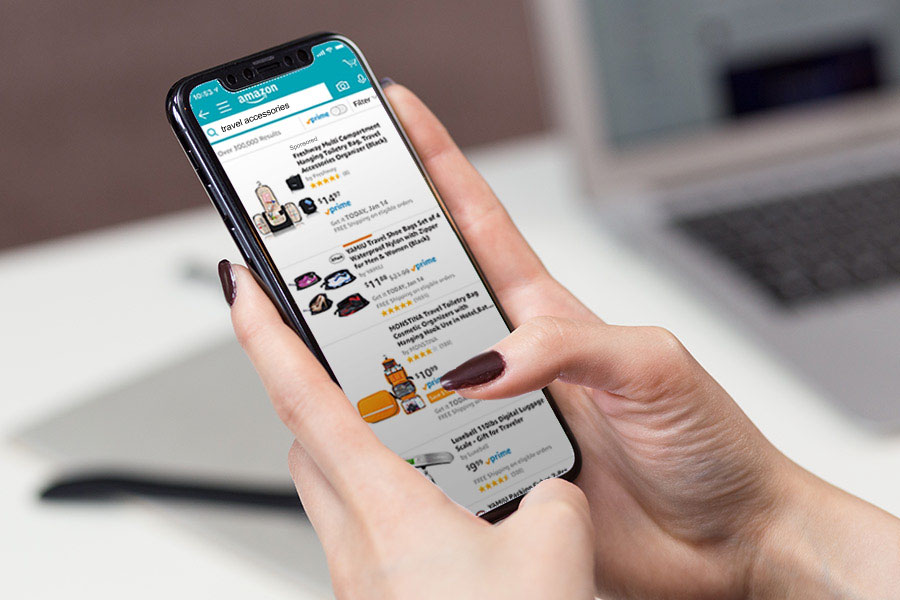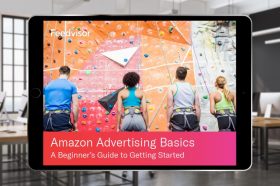Resources - Blog
Using Automatic and Manual Targeting for Amazon Advertising

Stay on top of the latest e-commerce and marketplace trends.
Amazon Sponsored Products ads appear at the top of, alongside, or within search results and on Amazon product pages. They are a natural choice for brands and retailers who are interested in driving discoverability and increasing sales, as they are keyword-targeted and are served to customers who are searching for products like the ones you are advertising, leading them to your product page.
With Sponsored Products, you control how much you want to spend on your bids and budgets and can effectively measure how your ads perform. They are pay-per-click ads, so you only pay when an Amazon shopper clicks on your ad, taking them to the page where your offer is listed. You set the maximum amount that you are willing to pay when a shopper clicks on your ad. Whether you are using these campaigns to generate awareness for a new product or brand, to promote seasonal items, or establish higher demand for an item that is performing well, it is critical to know the difference between automatic and manual targeting for Amazon advertising and when to use each targeting type.
What is Targeting for Sponsored Products?
Targeting uses keywords and products to show your ads on search and detail pages to relevant shoppers. With automatic targeting, Amazon targets ads to all relevant customer searches based on your product information — its category, related products, and keywords in your product description. For example, your ad will be eligible to be shown in the search results if your ad product closely or loosely matches search results from shoppers. You can discover long tail keywords that you may have never guessed people would search for. This form of targeting allows you to take the keywords you discovered and test them a manual campaign.
With manual targeting, you can manually select the keywords you want to bid on, choosing different match types for keywords. You can choose categories, products, brands, or features related to your product. With manual targeting, it is easy to reduce bids or pause your low-performing words. Given that you are in charge of the bid per keyword, you do not want to bid too high on keywords that don’t convert well, and some highly converting keywords perform better than others, so you want to reflect that in your bid.
On the flip side, with automatic targeting, you do not need to worry about the process of selecting the right keywords. However, going this route gives you less control compared to the manual campaign structure, where you can explicitly identify the keywords for searches your ads are surfacing for. Although automatic campaigns bid on relevant terms, there is also the chance that automatic campaigns will bid on irrelevant terms.
Should You Use Auto and Manual Campaigns in Unison?
Using automatic and manual campaigns together can be advantageous to your Amazon Advertising strategy. You need to constantly keep up with your ad bids, experiment, and optimize to figure out what works best for the items in your catalog. If you are running a manual campaign, you can launch an automatic campaign strategy alongside it, to see if you are missing out on any keyword opportunities that you are not harvesting on the manual side.
By utilizing both types of campaigns, you are more likely to discover keywords that are converting, as well as keywords that should be marked as negative keywords because they are either underperforming or are irrelevant to your product and are costing you unnecessary PPC costs. Each type of campaign has its own benefits and bidding strategies, so it is critical that you have an intimate understanding of your entire catalog, the campaign types that are and are not working, where you want to cap your individual keyword bids, and your ad spend, so that these variables can work together to ultimately drive clicks and conversions to your product listings.
Learn what Feedvisor can do for your business.
When you partner with Feedvisor, you automatically receive access to our true, AI-driven technology and hands-on team of e-commerce experts. Contact one of our team members today to learn more about our end-to-end solution for brands and large sellers on Amazon, Walmart, and e-marketplaces.



